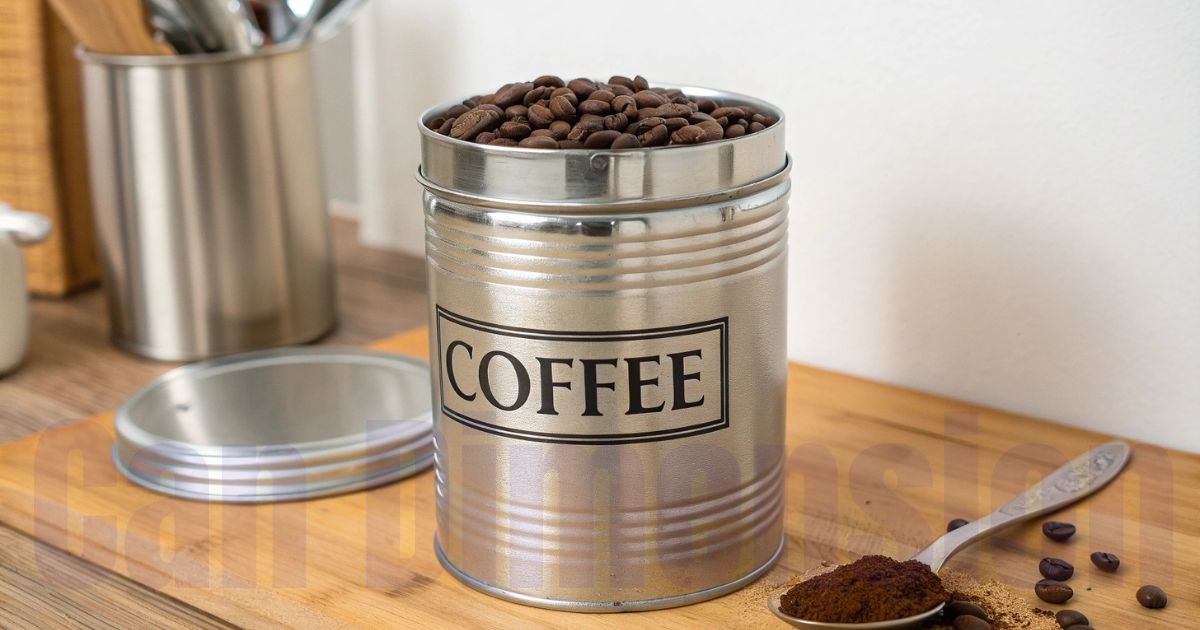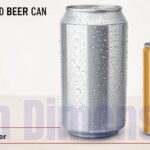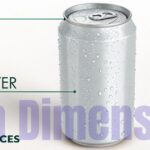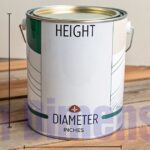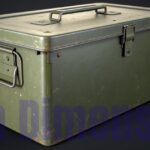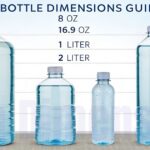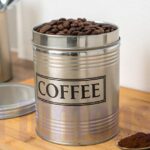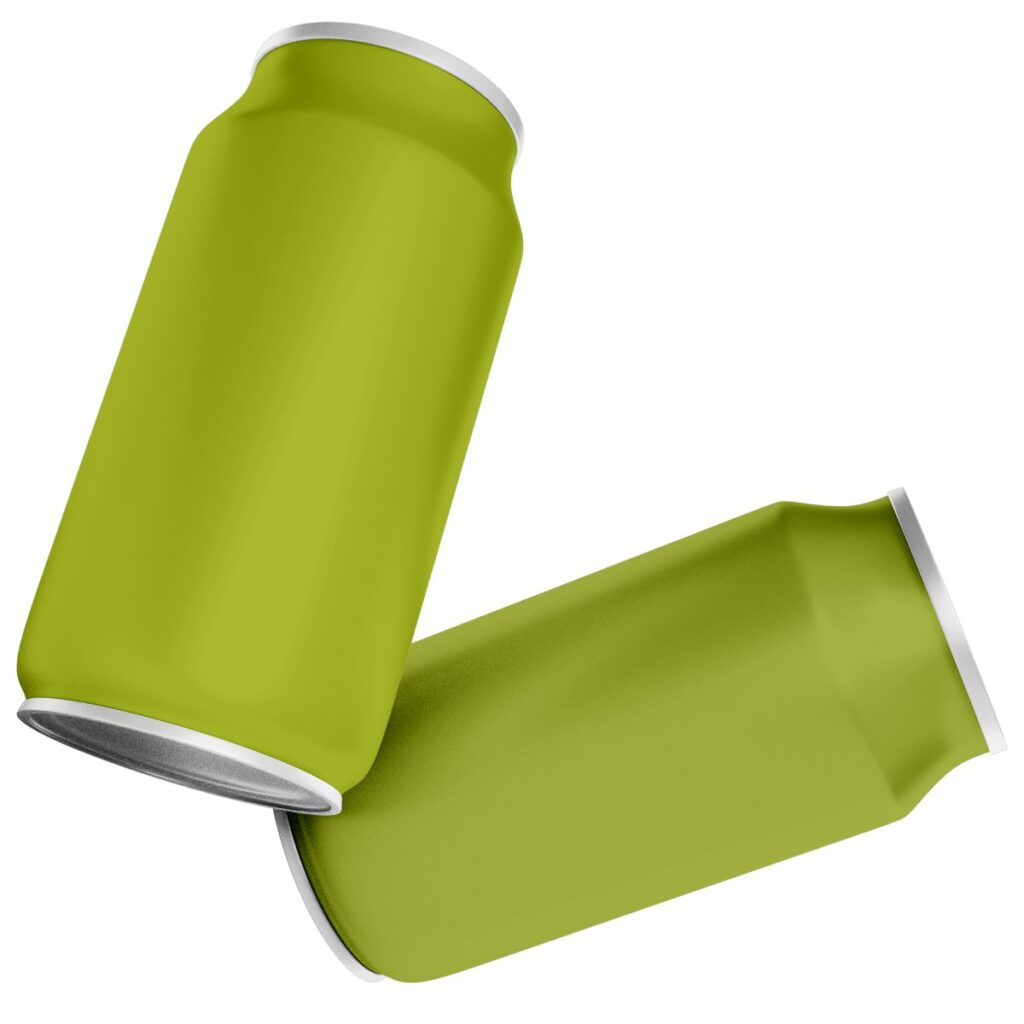When it comes to packaging coffee products, understanding coffee can dimensions is essential for businesses, roasters, and packaging professionals. The right can size affects storage, shipping costs, and how your product appears on store shelves.
This guide will help you understand the various sizes of coffee cans and how to read their measurements correctly.
Coffee Can Dimensions Conversion Chart
| Can Name | Can Size (Diameter x Height) | Capacity | Can Style | Chuck Size | Common Use |
|---|---|---|---|---|---|
| 211×106 | 2-11/16″ x 1-6/16″ | 3 oz | Steel, Straight | 211 | Sample/Trial |
| 301×106 | 3-1/16″ x 1-6/16″ | 4 oz | Steel, Straight | 301 | Single Serve |
| 307×111 | 3-7/16″ x 1-11/16″ | 6 oz | Steel, Straight | 307 | Small Retail |
| #1 (211×400) | 2-11/16″ x 4″ | 10 oz | Steel, Beaded | 211 | Standard Retail |
| #2 Short (307×308) | 3-7/16″ x 3-8/16″ | 13 oz | Steel, Beaded | 307 | Medium Retail |
| 301×407 | 3-1/16″ x 4-8/16″ | 16 oz | Steel, Tapered | 301 | Standard Pound |
| #2 (307×409) | 3-7/16″ x 4-9/16″ | 19 oz | Steel, Beaded | 307 | Large Retail |
| #2.5 (401×411) | 4-1/16″ x 4-11/16″ | 28 oz | Steel, Beaded | 401 | Value Size |
| #3 Tall (404×700) | 4-4/16″ x 7″ | 48 oz | Steel, Beaded | 404 | Commercial |
| #10 (603×700) | 6-3/16″ x 7″ | 100 oz | Steel, Beaded | 603 | Bulk/Institutional |
This coffee can dimension chart provides a quick reference for packaging professionals and beverage companies. All measurements follow industry standards used across North America. These specifications ensure compatibility with standard sealing equipment and manufacturing processes.
Standard Coffee Can Sizes and Dimensions
The coffee market uses various standard can sizes to meet different consumer needs and business requirements. From small sample sizes to large commercial containers, each size serves a specific purpose. Understanding these standard dimensions helps you choose the right packaging for your product line.
Small Coffee Cans (2-8 oz)
Small coffee cans typically range from 2 to 8 ounces in capacity. The 211×106 can measures 2 and 11/16 inches in diameter by 1 and 6/16 inches high, holding about 3 ounces. This size is perfect for sample packs or single-serve coffee options popular in the beverage marketplace.
The 301×106 can is slightly larger at 3 and 1/16 inches diameter by 1 and 6/16 inches high, with a 4-ounce capacity. Meanwhile, the 307×111 measures 3 and 7/16 inches by 1 and 11/16 inches, holding 6 ounces. These sizes work well for specialty coffee brands testing new flavors or offering trial sizes to consumers.
Medium Coffee Cans (10-16 oz)
Medium-sized coffee cans represent the most popular retail coffee segment sizes. The #1 can (211×400) measures 2 and 11/16 inches in diameter by 4 inches high, holding 10 ounces. This size offers a good balance between content volume and shelf space.
The #2 Short can (307×308) dimensions are 3 and 7/16 inches by 3 and 8/16 inches, with a 13-ounce capacity. The 301×407 tapered can holds 16 ounces and measures 3 and 1/16 inches by 4 and 8/16 inches. These medium sizes dominate grocery store shelves and appeal to regular coffee consumers seeking quality at a reasonable price.
Large Coffee Cans (19-32 oz)
Large coffee can dimensions serve families and heavy coffee drinkers who want better value. The #2 can (307×409) measures 3 and 7/16 inches in diameter by 4 and 9/16 inches high, holding 19 ounces. This size is common among established brands in the beverage industry.
The #2.5 can (401×411) offers 28 ounces of capacity with dimensions of 4 and 1/16 inches by 4 and 11/16 inches. This size represents significant growth in the value category for coffee products. Many consumers prefer these larger formats for daily use at home or office settings.
Extra-Large Coffee Cans (48 oz and above)
Extra-large coffee cans serve commercial operations and bulk buyers. The #3 Tall can (404×700) measures 4 and 4/16 inches in diameter by 7 inches high, holding 48 ounces. This size is popular in food service and office coffee programs.
The #10 can (603×700) is the largest standard size at 6 and 3/16 inches by 7 inches, with a massive 100-ounce capacity. These sizes are essential for restaurants, hotels, and large organizations. The beverage industry relies on these dimensions for bulk distribution and commercial applications.
Coffee Can Dimensions by Capacity
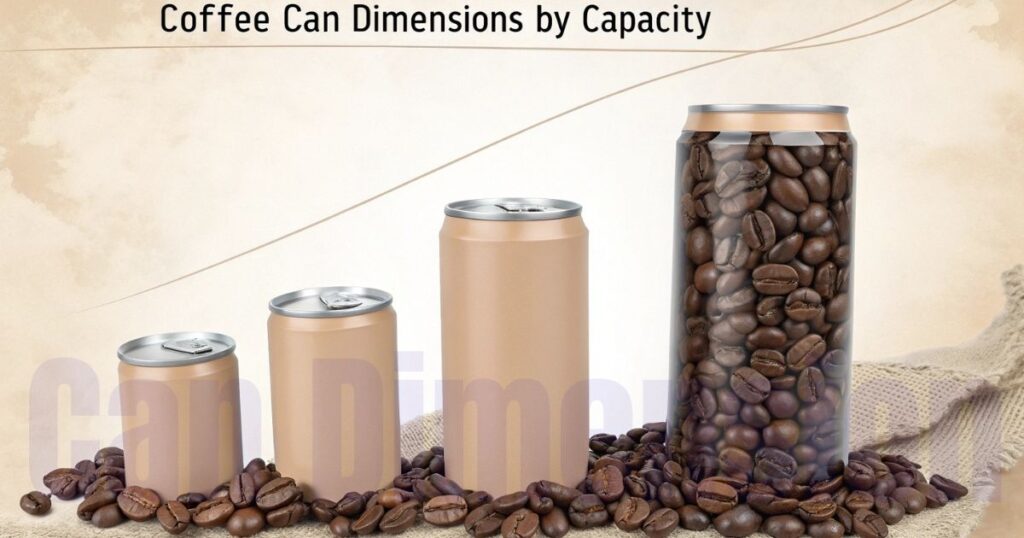
What Size Are Coffee Cans?
Coffee cans come in a wide range of sizes to meet diverse consumer needs in the beverage market. The most common retail sizes include 8 oz, 12 oz, 16 oz (1 pound), and 32 oz (2 pounds). Each size targets different consumer preferences and usage patterns in the coffee market.
Small coffee roasters often use 8-12 oz cans for specialty products and seasonal flavors. Meanwhile, major brands typically offer 16 oz and 32 oz options as their standard sizes. The beverage industry continues to see growth in premium sizes as consumers seek high quality coffee experiences at home.
Standard Coffee Can Lengths and Heights
Coffee can height varies significantly based on capacity and design style. Small 3-6 oz cans typically measure between 1.5 to 2 inches tall. Medium sizes range from 3.5 to 4.5 inches in height, while large commercial cans can reach 7 inches or more.
The height directly affects shelf presence and stacking capabilities during storage and shipping. Taller cans often create more visual impact on retail shelves, helping brands stand out. However, shorter, wider cans may offer better stability and easier handling for consumers and industry professionals.
Coffee Can Diameter Specifications
Standard coffee can diameter measurements range from 2.5 inches for small cans to over 6 inches for bulk containers. The most popular retail diameters fall between 3 and 4 inches. These dimensions provide adequate surface area for attractive label designs while fitting standard store shelving.
Diameter affects how many cans fit per shelf and influences consumer perception of value and quality. Wider cans offer more label space for brand messaging and product information. The beverage industry carefully considers diameter when developing new packaging to maximize retail appeal and shelf efficiency.
Specific Coffee Can Size Breakdowns
8 oz Coffee Can Dimensions
An 8-ounce coffee can typically measures approximately 3 and 7/16 inches in diameter by 2 inches high. This size is perfect for testing new flavors or offering premium specialty coffee at a lower price point. The compact dimensions make it ideal for gift sets and seasonal products.
The label area on an 8 oz can provides about 21 square inches of printable surface. This size has gained popularity among craft roasters entering the retail coffee segment. Consumers appreciate this size for trying new brands without committing to larger quantities.
12 oz Coffee Can Dimensions
The 12-ounce coffee can measures roughly 3 and 7/16 inches in diameter by 3.5 inches high. This size has become increasingly popular in the specialty coffee market as it offers three-quarters of a pound. Many consumers find this size perfect for maintaining freshness while enjoying variety.
Beverage companies favor this dimension because it stands out from the traditional 1-pound format. The can provides approximately 30 square inches of label space for brand storytelling. This size aligns with current lifestyle trends toward smaller household sizes and reduced waste.
16 oz Coffee Can Dimensions (1 lb)
The 16-ounce (one pound) coffee can is the most recognized size in the coffee industry, measuring 3 and 1/16 inches by 4 and 8/16 inches. This dimension has been the standard for decades and remains the top seller across most brands. The familiar size builds consumer trust and simplifies purchasing decisions.
This can size offers about 34 square inches of label area for brand communication and product details. Its dimensions fit perfectly in standard kitchen cabinets and food storage areas. The beverage industry considers this the benchmark size for comparing prices and value across different brands and products.
28 oz Coffee Can Dimensions
A 28-ounce coffee can (401×411) measures 4 and 1/16 inches in diameter by 4 and 11/16 inches high. This value size appeals to budget-conscious consumers and regular coffee drinkers. The larger diameter provides excellent shelf presence and visibility in stores.
This size offers nearly 45 square inches of label space for detailed product information and brand messaging. Companies report strong sales growth in this category as households seek better per-ounce value. The can’s dimensions make it easy to handle while providing substantial content volume.
32 oz Coffee Can Dimensions (2 lb)
The 32-ounce (two pound) coffee can typically measures around 4 and 4/16 inches by 5 to 5.5 inches high. This bulk size dominates the value category in grocery stores and warehouse clubs. Consumers buying this size typically drink multiple cups of coffee per day.
The large surface area accommodates comprehensive product information and eye-catching graphics that attract attention. This size represents significant savings per ounce compared to smaller formats. Beverage industry data shows continued growth in this segment despite trends toward premium single-origin coffee products.
Other Dimensions: Beverage Can Dimensions: Size, Height and Length
Questions
What size are coffee cans?
Coffee cans come in multiple standard sizes ranging from 3 ounces to 100 ounces. The most common retail sizes are 8 oz, 12 oz, 16 oz (1 pound), 28 oz, and 32 oz (2 pounds). Each size serves different consumer needs in the beverage market.
What is the standard can size?
The standard coffee can size in North America is 16 ounces (one pound), measuring 3 and 1/16 inches in diameter by 4 and 8/16 inches in height. This size has dominated the retail coffee segment for decades and remains the most recognized format. Consumers use this size as the benchmark for comparing prices and value.
What size is a 28oz can?
A 28-ounce coffee can uses the #2.5 size designation with dimensions of 401×411. This translates to 4 and 1/16 inches in diameter by 4 and 11/16 inches in height. The can style is typically steel with straight, beaded sides for structural strength.
What are the dimensions of a 330ml can?
A 330ml coffee can measures approximately 66mm (2.6 inches) in diameter by 115mm (4.5 inches) in height. This size equals roughly 11 ounces in U.S. measurements. The 330ml format is popular in European and international markets for single-serve beverage products.
How do I measure coffee can dimensions?
To measure coffee can dimensions accurately, use a ruler or calipers to measure the diameter across the widest point of the can. Then measure the height from the bottom seam to the top rim. Record measurements in inches and convert to the three-digit format if needed.
What’s the difference between coffee can height and length?
In the coffee industry, “height” and “length” both refer to the vertical measurement from bottom to top of the can. These terms are used interchangeably when discussing coffee can dimensions. The industry standard terminology uses “height” more commonly in specifications and technical documents.
Do coffee can dimensions affect freshness?
Coffee can dimensions significantly impact product freshness and quality over time. Larger cans contain more air space after opening, which accelerates oxidation and flavor degradation. Smaller cans help maintain coffee quality by reducing exposure time and air contact after the seal is broken.
Conclusion
Coffee can dimensions play a crucial role in product success across the beverage industry. From small 3 oz sample sizes to massive 100 oz commercial containers, each dimension serves specific market needs. Understanding how to read and interpret these measurements ensures you select appropriate packaging for your coffee business.

Haru, the dedicated Admin of candimension.com, curates an informational blog on Can Dimension. With passion and expertise, Haru delivers insightful articles to educate and empower readers on this fascinating niche.
